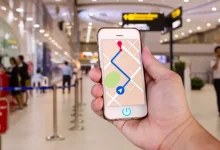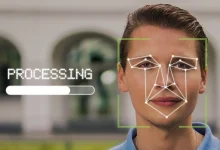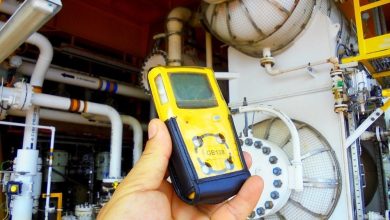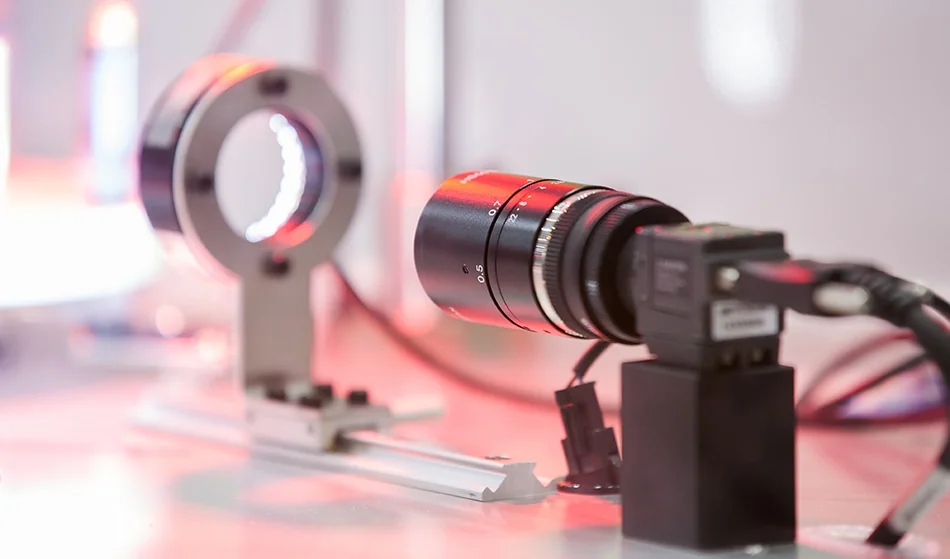Components of a Robotics about Sensors
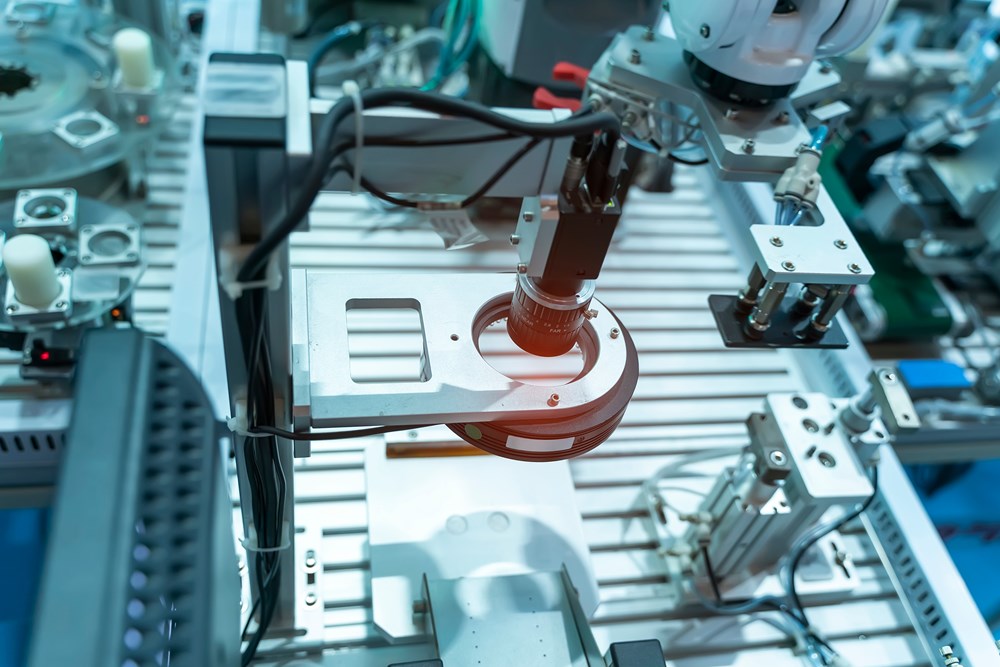
Sensors: The Eyes, Ears, and Touch of Robotics
In the realm of robotics, where perception and interaction with the environment are paramount, sensors emerge as fundamental components, providing crucial input for decision-making and control. Serving as the eyes, ears, and touch of robots, sensors enable them to perceive the world around them, navigate through complex environments, and interact with objects and humans with precision and accuracy. Join us on an in-depth exploration of sensors, unraveling their types, functionalities, and transformative role in shaping the landscape of modern robotics.

Types of Sensors:
- Vision Sensors:
Vision sensors, including cameras and depth sensors, provide robots with the ability to see and interpret visual information from their surroundings. Cameras capture images and videos, allowing robots to identify objects, recognize patterns, and navigate through environments. Depth sensors, such as LiDAR (Light Detection and Ranging) and time-of-flight cameras, measure distances to objects in the environment, enabling robots to perceive depth and generate 3D maps for navigation and obstacle avoidance.
Types of Vision Sensors:
- Camera Sensors:
Camera sensors capture images and videos of the robot’s surroundings, providing visual data for analysis and interpretation. These sensors utilize various imaging technologies, including charge-coupled devices (CCDs) and complementary metal-oxide-semiconductor (CMOS) sensors, to capture light and convert it into digital signals. Cameras come in different configurations, such as monochrome, color, and infrared, offering flexibility for different applications and environments.
- Depth Sensors:
Depth sensors measure the distance to objects in the environment, enabling robots to perceive depth and generate three-dimensional (3D) representations of the scene. Common types of depth sensors include time-of-flight (ToF) cameras, structured light sensors, and stereo vision systems. Depth sensors provide valuable information for obstacle detection, navigation, and object recognition in robotics applications.
- LiDAR Sensors:
LiDAR (Light Detection and Ranging) sensors emit laser pulses and measure the time it takes for the pulses to reflect off objects in the environment. By scanning the laser beams in different directions, LiDAR sensors create detailed 3D maps of the surroundings, with precise measurements of distance and spatial information. LiDAR sensors are widely used for mapping, localization, and navigation in autonomous robots and vehicles.
- Motion Sensors:
Motion sensors detect changes in the robot’s motion or the motion of objects in the environment. These sensors include accelerometers, gyroscopes, and inertial measurement units (IMUs), which provide information about the robot’s acceleration, angular velocity, and orientation. Motion sensors enable robots to stabilize their movements, detect collisions, and navigate through dynamic environments with agility and precision.
- Infrared Sensors:
Infrared sensors detect infrared radiation emitted by objects in the environment, providing information about temperature, heat distribution, and thermal signatures. These sensors are used for applications such as heat detection, thermal imaging, and object tracking in robotics. Infrared sensors enable robots to perceive and interact with objects based on their thermal properties, enhancing situational awareness and object recognition capabilities.

Functionalities of Vision Sensors:
- Object Detection and Recognition:
Vision sensors enable robots to detect and recognize objects in their surroundings, distinguishing between different shapes, colors, and textures. By analyzing visual data from cameras and depth sensors, robots can identify objects, classify them into categories, and localize them within the environment. Object detection and recognition are essential for tasks such as pick-and-place operations, sorting, and assembly in robotics applications.
- Obstacle Avoidance and Navigation:
Vision sensors facilitate obstacle avoidance and navigation in robotics applications, allowing robots to navigate through complex environments safely and efficiently. LiDAR sensors and depth cameras provide depth information for creating obstacle maps and planning collision-free trajectories. By integrating vision sensors with path planning algorithms, robots can autonomously navigate through cluttered spaces and avoid collisions with obstacles.
- Localization and Mapping:
Vision sensors play a crucial role in localization and mapping for autonomous robots and vehicles. Depth sensors and LiDAR sensors generate detailed maps of the environment, while camera sensors provide visual landmarks for localization. By fusing data from multiple sensors and performing simultaneous localization and mapping (SLAM), robots can determine their position and orientation relative to the surroundings, enabling autonomous navigation and exploration.
- Gesture and Pose Estimation:
Vision sensors enable robots to interpret human gestures and estimate the pose of objects in the environment. Camera sensors capture images of human gestures or object poses, which are then analyzed using computer vision algorithms to infer the intended actions or orientations. Gesture and pose estimation are used for human-robot interaction, object manipulation, and control in robotics applications.
- Quality Inspection and Monitoring:
Vision sensors are used for quality inspection and monitoring in manufacturing and industrial robotics applications. Camera sensors capture images of products or components, which are analyzed for defects, anomalies, or deviations from specifications. Vision-based inspection systems enable robots to perform automated quality control, ensuring product quality and consistency in manufacturing processes.
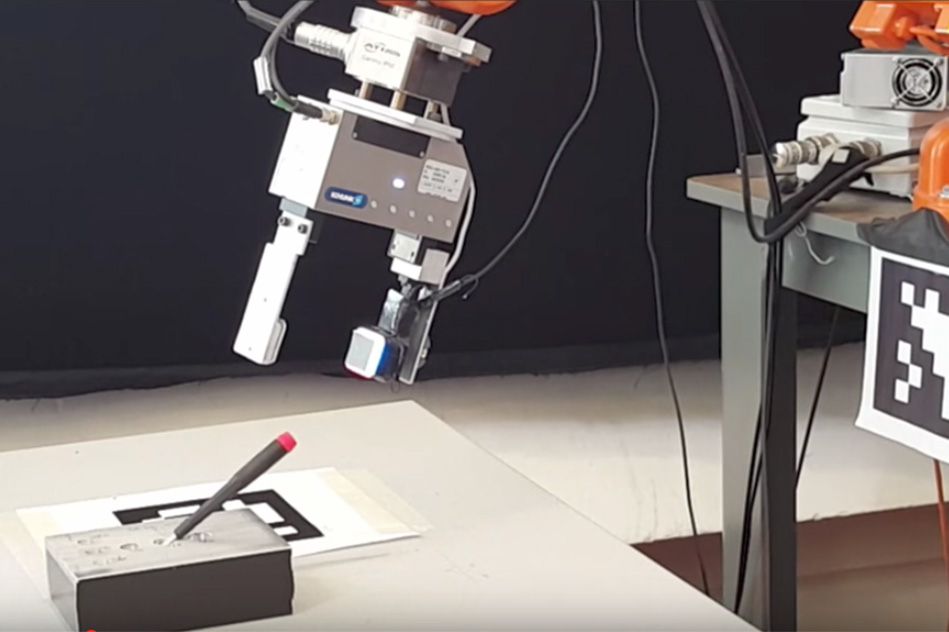
Significance of Vision Sensors in Robotics:
- Enhanced Perception and Understanding:
Vision sensors provide robots with enhanced perception and understanding of the environment, enabling them to interpret visual information and make informed decisions autonomously. By capturing images and videos of the surroundings, vision sensors enable robots to recognize objects, detect obstacles, and navigate through complex environments with precision and accuracy.
- Autonomous Operation and Navigation:
Vision sensors enable autonomous operation and navigation for robots, allowing them to navigate through dynamic environments without human intervention. By analyzing visual data and generating 3D maps of the surroundings, robots can plan collision-free trajectories, localize themselves within the environment, and adapt their behavior based on changing conditions. Vision-based navigation systems are essential for applications such as autonomous vehicles, drones, and mobile robots.
- Flexible and Adaptive Behavior:
Vision sensors enable robots to exhibit flexible and adaptive behavior in response to changes in the environment or task requirements. By analyzing visual data in real-time, robots can adjust their actions, trajectory, or manipulation strategy to accommodate variations in object position, shape, or orientation. Vision-based control systems allow robots to adapt to unforeseen circumstances and perform tasks with agility and efficiency.
- Human-Robot Interaction:
Vision sensors facilitate human-robot interaction by enabling robots to perceive and interpret human gestures, expressions, and intentions. By capturing images of human gestures or facial expressions, vision sensors enable robots to understand and respond to human commands, gestures, and emotions. Vision-based interaction systems enhance the user experience and promote seamless collaboration between humans and robots in various domains, including healthcare, education, and entertainment.
- Innovation and Advancement:
Ongoing research and development in vision sensor technologies drive innovation and advancement in the field of robotics, unlocking new possibilities for performance, functionality, and application. From advancements in sensor resolution and image processing algorithms to innovations in sensor fusion and artificial intelligence, vision sensors continue to evolve, enabling robots to push the boundaries of perception, interaction, and autonomy.
In conclusion, vision sensors stand as essential components in the realm of robotics, providing robots with perception, awareness, and interaction capabilities essential for autonomous operation and intelligent behavior. From cameras capturing visual data to LiDAR sensors generating 3D maps, vision sensors enable robots to see and understand the world around them with precision and accuracy. As robotics technology continues to advance and evolve, the significance of vision sensors as the eyes of robots remains steadfast, shaping the future of automation and human-machine interaction.
- Inertial Sensors:
Inertial sensors, such as accelerometers and gyroscopes, measure the acceleration and angular velocity of a robot’s body in three-dimensional space. These sensors provide information about the robot’s orientation, velocity, and changes in motion, facilitating stabilization, motion control, and navigation. Inertial sensors are essential for applications such as balancing robots, inertial navigation systems, and gesture recognition.
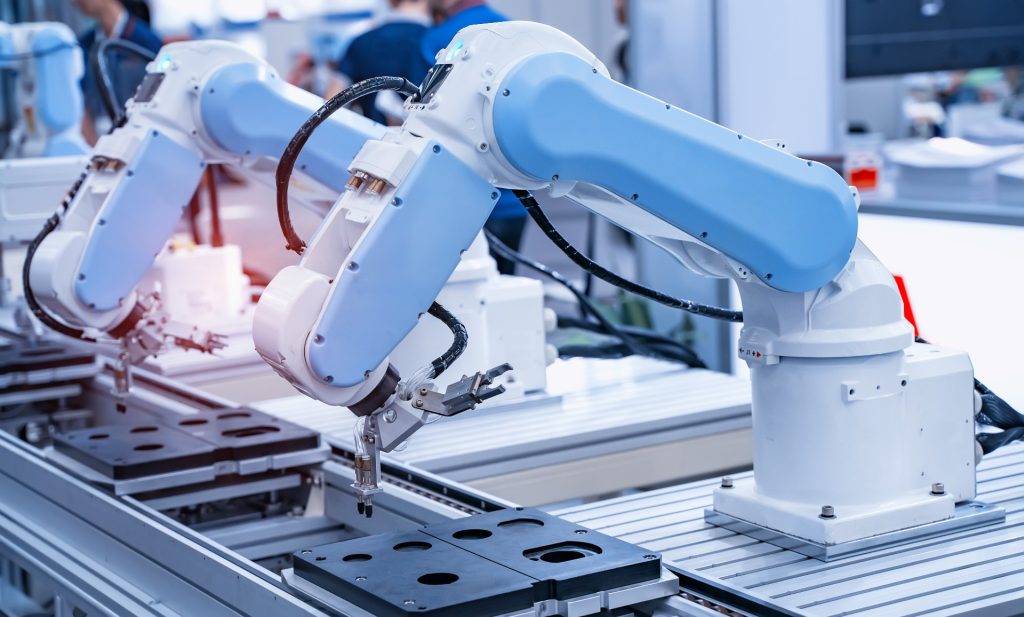
Inertial Sensors: Navigating the Path of Robotics
In the intricate world of robotics, where precision, agility, and adaptability are paramount, inertial sensors stand as fundamental components, providing crucial input for navigation, motion control, and stabilization. Serving as the ears and internal compass of robots, inertial sensors enable them to perceive changes in motion, orientation, and acceleration, facilitating autonomous operation and intelligent behavior. Join us on an in-depth exploration of inertial sensors, unraveling their types, functionalities, and transformative role in shaping the landscape of modern robotics.
Types of Inertial Sensors:
- Accelerometers:
Accelerometers measure the acceleration of a robot’s body in three-dimensional space, providing information about changes in velocity and direction. These sensors typically consist of microelectromechanical systems (MEMS) components, such as microstructures or capacitive plates, which deform in response to acceleration forces. By measuring the deformation, accelerometers can determine the magnitude and direction of acceleration along different axes, enabling robots to detect changes in motion and velocity.
- Gyroscopes:
Gyroscopes measure the angular velocity or rate of rotation of a robot’s body around different axes, providing information about changes in orientation and angular motion. These sensors utilize principles such as the Coriolis effect or mechanical resonance to detect rotational movement. Gyroscopes can be either mechanical gyroscopes or MEMS-based gyroscopes, with MEMS gyroscopes being more common in modern robotics due to their smaller size, lower cost, and higher precision.
- Inertial Measurement Units (IMUs):
Inertial Measurement Units (IMUs) combine accelerometers and gyroscopes into a single integrated sensor package, providing comprehensive information about a robot’s motion and orientation. IMUs typically consist of multiple accelerometers and gyroscopes arranged along different axes, along with additional components such as magnetometers or barometers for detecting magnetic fields or atmospheric pressure. By fusing data from multiple sensors, IMUs can provide accurate measurements of position, velocity, and orientation in three-dimensional space.
Functionalities of Inertial Sensors:
- Motion Sensing and Analysis:
Inertial sensors enable robots to sense and analyze changes in motion, velocity, and acceleration, providing valuable information for motion control and navigation. Accelerometers detect linear acceleration along different axes, while gyroscopes measure angular velocity around different axes. By integrating data from accelerometers and gyroscopes, robots can analyze their motion profile, detect changes in velocity, and adjust their trajectory or velocity accordingly.
- Orientation Estimation and Stabilization:
Inertial sensors facilitate orientation estimation and stabilization for robots, enabling them to maintain a stable posture or orientation in dynamic environments. Gyroscopes provide continuous measurements of angular velocity, allowing robots to track changes in orientation and adjust their orientation in real-time. By combining gyroscope data with accelerometer data, robots can estimate their current orientation relative to a reference frame and implement stabilization algorithms to maintain a desired orientation.
- Dead Reckoning and Localization:
Inertial sensors enable dead reckoning and localization for robots, allowing them to estimate their position and trajectory based on inertial measurements. By integrating acceleration and angular velocity over time, robots can calculate changes in position and orientation relative to a starting point. Dead reckoning is often used in combination with other localization techniques, such as GPS or visual odometry, to provide accurate position estimates for autonomous navigation in robotics applications.
- Motion Gesture Recognition:
Inertial sensors enable motion gesture recognition for human-robot interaction and control. By analyzing patterns of acceleration and angular velocity, robots can detect specific motion gestures or commands made by users and interpret them as control inputs. Motion gesture recognition is used in applications such as gesture-based control interfaces, virtual reality systems, and wearable devices, allowing users to interact with robots using natural hand movements.
- Vibration Analysis and Monitoring:
Inertial sensors enable vibration analysis and monitoring for condition monitoring and predictive maintenance in robotics applications. By measuring vibrations in the robot’s body or mechanical components, accelerometers can detect abnormal vibration patterns indicative of mechanical faults or wear. Vibration analysis enables robots to identify potential issues early, perform predictive maintenance, and prevent unexpected downtime or failures in industrial or mobile robotic systems.

Significance of Inertial Sensors in Robotics:
- Autonomous Navigation and Control:
Inertial sensors play a crucial role in autonomous navigation and control for robots, providing essential input for motion planning, trajectory generation, and stabilization. By sensing changes in motion and orientation, inertial sensors enable robots to navigate through dynamic environments, avoid obstacles, and maintain stable motion trajectories. Inertial sensors are essential components of autonomous systems such as drones, mobile robots, and unmanned vehicles, enabling them to operate independently in complex and unpredictable environments.
- Adaptive Motion Control and Agility:
Inertial sensors enable robots to exhibit adaptive motion control and agility, adjusting their behavior and trajectory in response to changes in the environment or task requirements. By analyzing inertial measurements in real-time, robots can detect disturbances, changes in terrain, or unexpected obstacles and adapt their motion strategy accordingly. Inertial sensors enable robots to perform dynamic maneuvers, stabilize their motion, and respond quickly to changing conditions, enhancing their agility and versatility in various robotics applications.
- Precise Positioning and Localization:
Inertial sensors provide precise positioning and localization capabilities for robots, enabling them to determine their position and orientation accurately in three-dimensional space. By integrating inertial measurements over time, robots can estimate their trajectory and track their position relative to a reference frame. Inertial sensors are used in conjunction with other localization techniques such as GPS, visual odometry, or environmental mapping to provide accurate and reliable position estimates for navigation in indoor or outdoor environments.
- Compact and Lightweight Design:
Inertial sensors offer a compact and lightweight design, making them suitable for integration into portable or wearable robotic systems. MEMS-based inertial sensors have a small form factor and low power consumption, allowing them to be embedded into drones, wearable devices, or mobile robots without adding significant weight or size. The compact and lightweight design of inertial sensors enables the development of agile, versatile, and mobile robotic platforms for various applications in fields such as healthcare, agriculture, or search and rescue.
Continuous Monitoring and Predictive Maintenance:
Inertial sensors enable continuous monitoring and predictive maintenance for robotic systems, detecting changes in motion or mechanical condition indicative of potential faults or failures. By analyzing inertial measurements over time, robots can identify abnormal vibration patterns, excessive wear, or mechanical stress on components and alert operators to take preventive action. Continuous monitoring and predictive maintenance help prolong the lifespan of robotic systems, reduce downtime, and improve overall reliability and performance in industrial or mission-critical applications.
In conclusion, inertial sensors stand as essential components in the realm of robotics, providing crucial input for navigation, motion control, and stabilization. From sensing changes in motion and orientation to enabling autonomous navigation and adaptive motion control, inertial sensors play a vital role in enhancing the agility, autonomy, and reliability of robots in various applications and environments. As robotics technology continues to advance and evolve, the significance of inertial sensors as navigational aids and internal compasses remains steadfast, shaping the future of automation and intelligent robotics.
- Proximity Sensors:
Proximity sensors detect the presence or absence of objects in close proximity to the robot’s body or end effector. Common types of proximity sensors include ultrasonic sensors, infrared sensors, capacitive sensors, and inductive sensors. These sensors enable robots to detect obstacles, perform object detection, and implement collision avoidance strategies in various environments.
- Force and Tactile Sensors:
Force and tactile sensors measure the forces exerted on the robot’s body or end effector during interactions with objects or surfaces. These sensors provide feedback about contact forces, pressure distribution, and object properties, enabling robots to grasp objects with the right amount of force, detect surface textures, and perform tasks requiring delicate manipulation and interaction.
- Temperature and Humidity Sensors:
Temperature and humidity sensors monitor environmental conditions such as temperature, humidity, and atmospheric pressure. These sensors provide valuable data for environmental monitoring, climate control, and safety in robotics applications. Temperature sensors enable robots to operate in extreme temperatures, while humidity sensors ensure optimal performance in humid environments.
- Gaseous and Chemical Sensors:
Gaseous and chemical sensors detect the presence and concentration of specific gasses or chemicals in the environment. These sensors are used in applications such as air quality monitoring, gas leak detection, and chemical analysis. Gas sensors enable robots to detect harmful gasses, while chemical sensors provide insights into environmental pollutants or chemical processes.
- Biometric Sensors:
Biometric sensors measure physiological parameters such as heart rate, blood pressure, and skin conductance. These sensors enable robots to assess human physiological responses, monitor user health and well-being, and personalize interactions based on individual characteristics. Biometric sensors are used in applications such as healthcare robotics, assistive technology, and human-robot interaction.
Functionalities of Sensors:
- Perception and Sensing:
Sensors enable robots to perceive and sense the world around them, providing valuable information about the environment, objects, and events. Vision sensors capture visual data, while proximity sensors detect obstacles, and force sensors measure contact forces. By integrating multiple sensors, robots can create comprehensive situational awareness and make informed decisions in real-time.
- Navigation and Localization:
Sensors play a crucial role in robot navigation and localization, enabling robots to determine their position and orientation relative to their surroundings. Inertial sensors provide motion data for dead reckoning, while vision sensors and LiDAR generate maps for localization and path planning. By fusing data from multiple sensors, robots can navigate autonomously in complex environments with accuracy and efficiency.
- Manipulation and Interaction:
Sensors facilitate robot manipulation and interaction with objects and humans. Force and tactile sensors provide feedback for grasping and manipulation tasks, while biometric sensors enable robots to detect human gestures and physiological responses. By adapting their actions based on sensor feedback, robots can interact with objects and users in a safe, intuitive, and adaptive manner.
- Fault Detection and Diagnostics:
Sensors are used for fault detection and diagnostics in robotic systems, enabling early detection of anomalies and malfunctions. Temperature sensors monitor component temperatures for overheating, while vibration sensors detect mechanical vibrations indicative of wear or damage. By implementing condition monitoring systems, robots can perform predictive maintenance and minimize downtime.
- Environmental Monitoring and Control:
Sensors monitor environmental conditions such as temperature, humidity, and gas concentrations, enabling robots to operate safely and efficiently in various environments. Temperature sensors regulate internal temperatures to prevent overheating, while gas sensors detect hazardous gasses for worker safety. By monitoring environmental parameters, robots can adapt their behavior and optimize performance accordingly.

Significance of Sensors in Robotics:
- Enhanced Perception and Awareness:
Sensors provide robots with enhanced perception and awareness of their surroundings, enabling them to navigate through complex environments, interact with objects, and respond to changes in the environment in real-time. By integrating sensors with advanced processing algorithms, robots can create detailed maps, identify objects, and make intelligent decisions autonomously.
- Improved Safety and Reliability:
Sensors contribute to improved safety and reliability in robotics applications by detecting hazards, monitoring environmental conditions, and preventing accidents. Proximity sensors enable robots to detect obstacles and implement collision avoidance strategies, while force sensors prevent excessive forces during manipulation tasks. By prioritizing safety, robots can operate effectively in diverse environments without posing risks to humans or equipment.
- Enhanced Human-Robot Interaction:
Sensors enable enhanced human-robot interaction by providing robots with the ability to perceive human gestures, emotions, and physiological responses. Biometric sensors enable robots to detect user preferences, personalize interactions, and adapt behavior based on individual characteristics. By fostering natural and intuitive communication, sensors enhance the user experience and promote seamless collaboration between humans and robots.
- Autonomous Operation and Adaptation:
Sensors enable robots to operate autonomously and adapt to changing environmental conditions without human intervention. Inertial sensors provide motion data for navigation, while vision sensors detect obstacles and landmarks for localization. By processing sensor data in real-time, robots can make autonomous decisions, plan trajectories, and execute tasks with agility and efficiency.
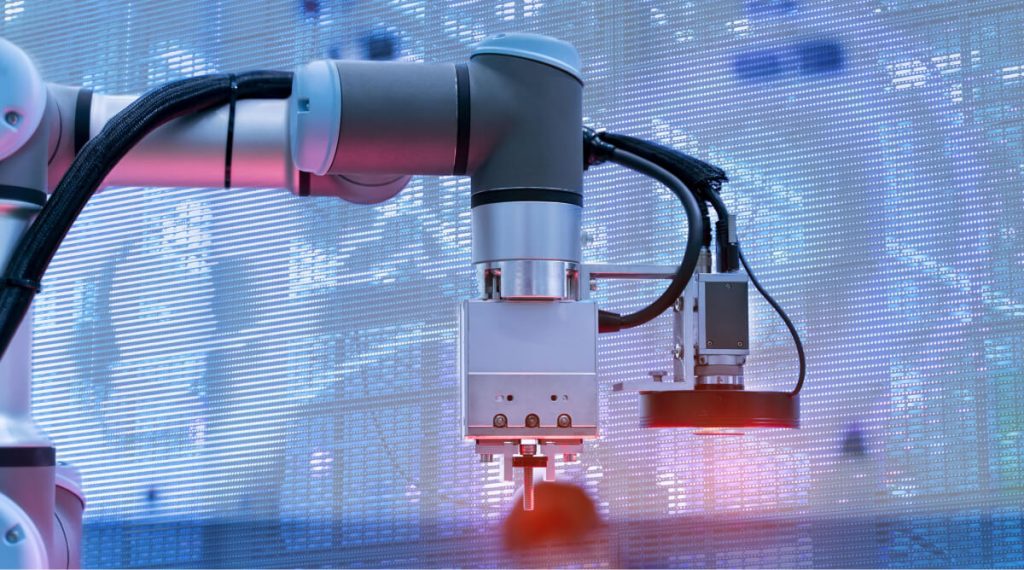
- Innovation and Advancement:
Ongoing research and development in sensor technologies drive innovation and advancement in the field of robotics, unlocking new possibilities for performance, functionality, and application. From advancements in sensor miniaturization and integration to innovations in sensor fusion and artificial intelligence, sensors continue to evolve, enabling robots to push the boundaries of perception, interaction, and autonomy.
In conclusion, sensors stand as essential components in the realm of robotics, providing robots with perception, awareness, and interaction capabilities essential for autonomous operation and intelligent behavior. From vision sensors capturing visual data to force sensors measuring contact forces, sensors enable robots to perceive and interact with the world around them with precision and accuracy. As robotics technology continues to advance and evolve, the significance of sensors as the eyes, ears, and touch of robots remains steadfast, shaping the future of automation and human-machine interaction.
